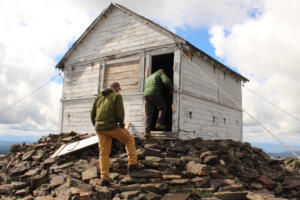We are now moving past “mere” voter suppression and voter intimidation. We have arrived at voter assassination.
It was almost exactly 80 years ago that the Nazis made their first serious move against their own citizens, who happened to be Jewish. It was Nov. 9 and Nov. 10, 1938.
The Sturmabteilung, that is, the paramilitary Brownshirts, sort of like the Proud Boys plus Robert Bowers plus Cesar Sayoc — ideological killers of Jews and other targets — pulled off the 1938 Kristallnacht, the attack on synagogues and Jewish businesses. They were far more prolific than Trump’s crew, destroying some 267 synagogues located in Sudetenland, Austria and Germany. Estimates of murders of Jews were 91 at the time, but that figure rose later, after more investigation.
Trump’s invectives — identity attacks, slurs against his critics and tolerance and even encouragement for physical violence against his opponents — are one big permission slip to his more rabid supporters, including Cesar Sayoc, the suspect in the recent bombs sent to prominent Democrats, Trump critics and mainstream media outlets, most obviously, and Robert Bowers, the suspected gunman in the Pittsburgh Tree of Life synagogue attack, in all likelihood.
Sayoc’s van is plastered with pro-Trump posters and stickers, which is a more or less normal position of favor for a politician, but it’s his other signage, his hate posters for Hillary Clinton and Michael Moore and others — all with crosshairs over their faces — that really set him apart. The rage is palpable, visible and, sure enough, he acted on it, allegedly sending pipe bombs to the Clintons, Obamas, George Soros and others.

